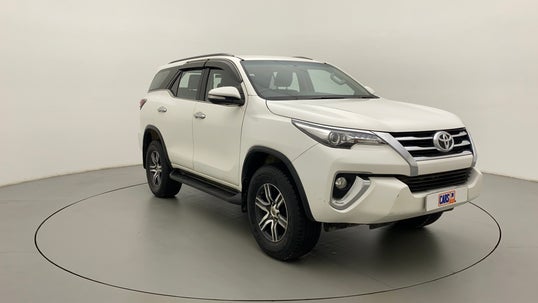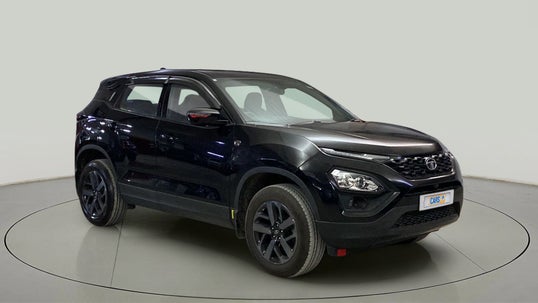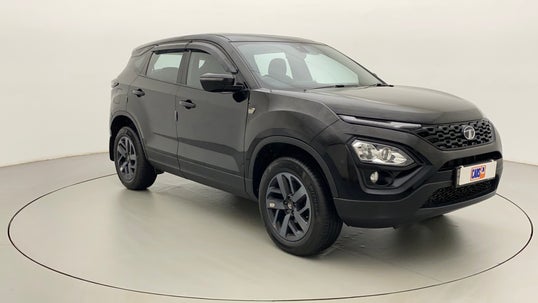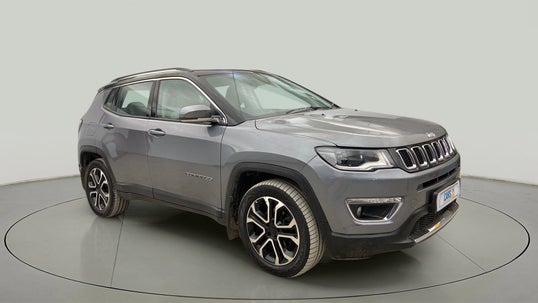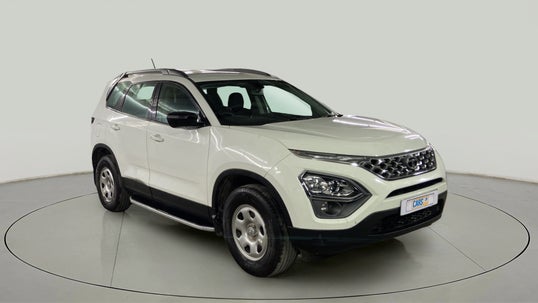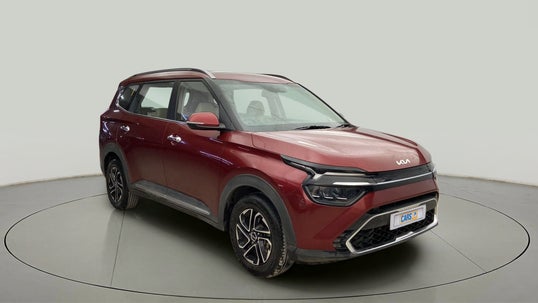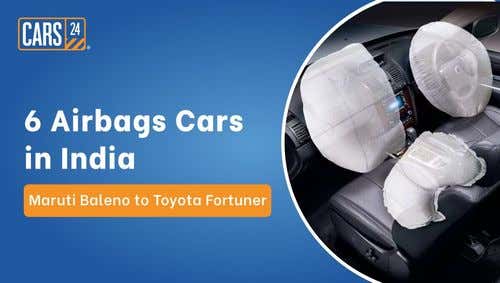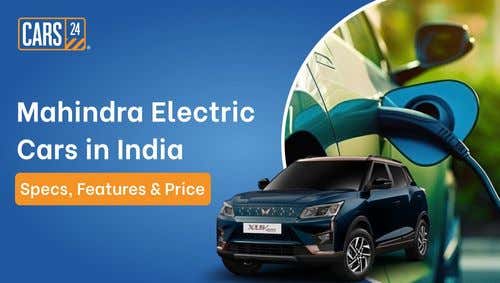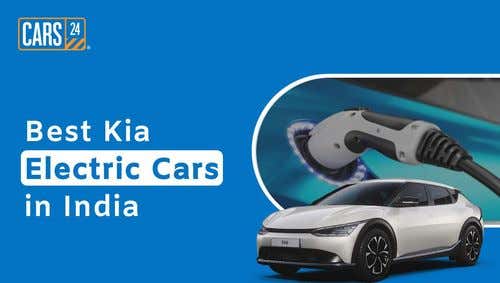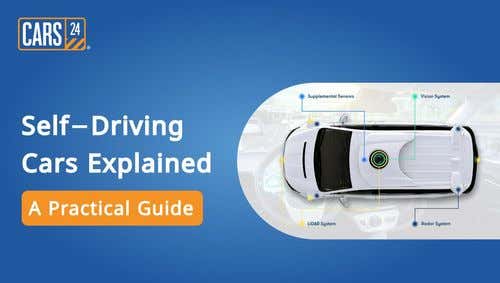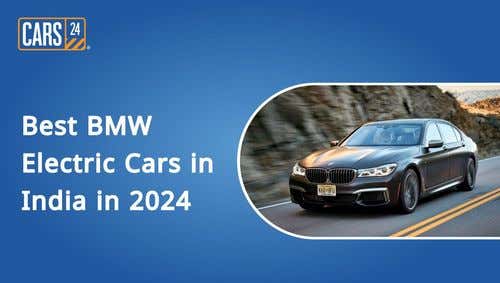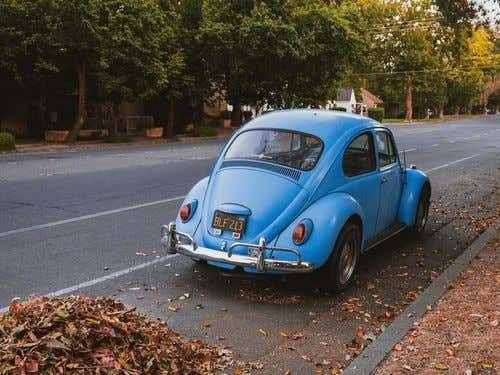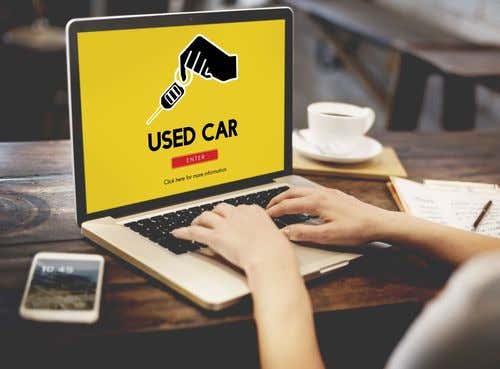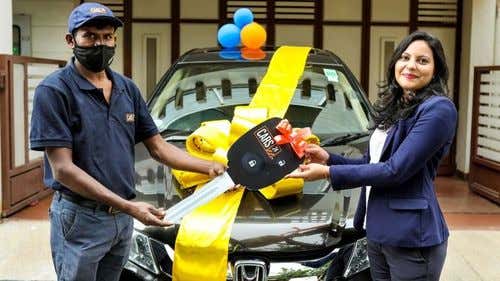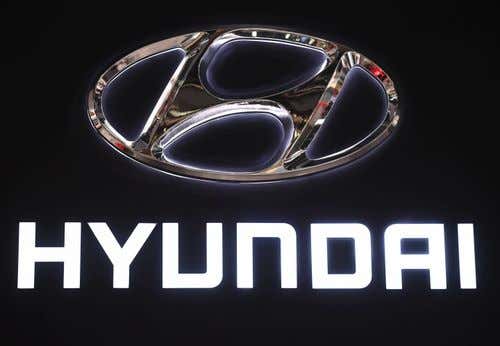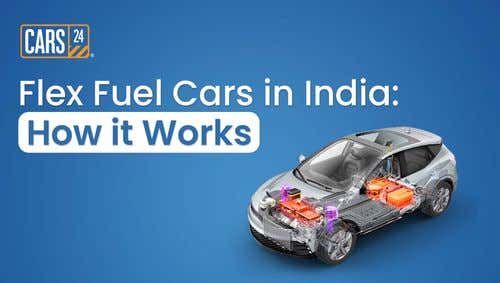Types of Driving Licenses in India : All You need To Know

Updated on: 22nd August, 2023 IST

Driving is not merely a means of transportation; it represents freedom, independence, and convenience. In India, obtaining a driving licence is a crucial step towards embracing this freedom. However, before you make a move to secure a DL in India, it's essential to understand the different types available and the privileges they confer.
As per the provisions outlined in the Motor Vehicle Act of 1988, the operation of a motor vehicle within India requires the possession of a vital credential — a driver's licence. In this blog post, we will look at the various driving licence types, their meanings, and the vehicles they permit you to drive.
Table of Contents
- Types of Driving Licences in India
- Here are the different types of Driving Licences based on the category of vehicles:
- Why is a Driving License important?
- Eligibility Criteria for Obtaining a Driving License in India
- Documents Required for Obtaining a Driving Licence in India
- Disadvantages of Not Having a Driving Licence in India
- The Bottom Line
- FAQs
Types of Driving Licences in India
If you’re over the age of 18, you have the privilege to apply for a driving licence, but it is essential to successfully pass a practical driving examination before obtaining a permanent licence. India offers various types of driving licences, each serving different purposes. Let's explore them:
1. Learner’s Licence
The learner’s licence is the first stage towards acquiring a permanent driving licence in India. It is issued to individuals who are in the process of learning to drive a vehicle. The learner’s licence is valid for six months from the date it is issued, during which you must apply for a permanent licence.
To obtain a permanent licence, you need to hold a learner's licence for at least thirty days. However, certain conditions are attached to the learner's licence, including:
- You must receive training from someone possessing a permanent licence.
- It is necessary to have a comprehensive understanding of traffic rules and regulations, in addition to mastering the physical operation of the vehicle.
- The vehicle used for learning should display a visible 'L' symbol in red, indicating that you are a learner driver.
- For those holding a learner's licence for a commercial vehicle, training must be obtained from government-recognised vehicle training institutes.
- Only trainers are allowed to ride pillion with learner riders on two-wheelers.
- The vehicle used for training must fall within the category specified on the learner's permit.
At what stage does one prepare for a Learner's Licence theory test in India?
One can start preparing for the Learner's Licence theory test at any stage, but it is advisable to start preparing as soon as you decide to apply for a Learner's Licence. This will give you enough time to learn the traffic rules and road signs, and to practise answering questions on these topics.
How to prepare for the test?
There are a number of ways to prepare for the Learner's Licence theory test. Here are a few tips:
- Read the traffic rules and road signs carefully
There are a number of resources available online and in libraries that can help you with this
- Take mock tests
There are a number of websites and apps that offer mock tests for the Learner's Licence theory test. Taking these tests will help you get a feel for the types of questions that are asked, and it will also help you improve your timing
- Practice with friends or family
If you have friends or family members who are already driving, ask them if they would be willing to help you practise answering questions on traffic rules and road signs
- Make sure you understand the basic traffic rules
This includes things like the right of way, speed limits, and parking regulations.
- Be familiar with the different types of road signs
There are a number of different types of road signs, and each one has a specific meaning.
- Practice answering questions in a timed setting
This will help you get used to the pressure of the test and to manage your time effectively.
2. Permanent Licence
Once you have completed the learning phase, individuals aged 18 years or above, holding a valid learner's licence for more than 30 days, can apply for a permanent driving licence for private vehicles. This can be done either through the online application process or by visiting the Regional Transport Office (RTO).
After scheduling and successfully passing the driving test, you will be granted a permanent driving licence for private vehicles.
3. Commercial Driving Licence
This type of licence is intended for individuals who operate vehicles for commercial purposes, including the transportation of goods or passengers. To obtain a commercial vehicle licence, drivers must have completed at least the eighth grade of schooling.
Issuance of commercial vehicle licences adheres to separate regulations, ensuring strict standards and safety on the road.
Drivers of such vehicles are required to undergo a mandatory training course in operating heavy vehicles from a government-recognised training school. This ensures a comprehensive understanding of safety practices and specialised knowledge of heavy motor transport operations.
4. International Driving Permit
An international driving permit allows you to drive outside of India. This permit holds global recognition and is valid for one year, with the option of renewal. It is important to note that an international driving permit can only be obtained if you already possess a valid permanent driving licence.
Having an international driving permit provides you with the freedom to drive in foreign countries, allowing for smooth travel experiences while complying with international regulations.
In addition to the various types of driving licences in India, there exist distinct categories for vehicles as well. These categories are specified on the driving licence itself, indicating the specific type of vehicle that an individual is authorised to operate. It is important to ensure that the vehicle being driven aligns with the designated category mentioned on the licence. This ensures compliance with the regulations and promotes responsible and lawful driving practices.
Here are the different types of Driving Licences based on the category of vehicles:
| Licence Category | Class of Vehicles |
| Motorcycle without Gear | Two-wheelers without gears |
| Motorcycle with Gear | Two-wheelers with gears |
| Light Motor Vehicle | Non-transport vehicles(with weight limit up to 7,500 kg) |
| Medium Goods Vehicle | Medium-sized commercial vehicles(7,500-12,000 kg) |
| Medium Passenger Vehicle | Medium-sized commercial vehicles(13-30 seating capacity) |
| Heavy Goods Vehicle | Heavy commercial vehicles(weight limit exceeds 12,000 kg) |
| Heavy Passenger Vehicle | Large commercial vehicles(seating capacity > 30) |
1. Motorcycle without Gear (MCWOG) Licence:
The MCWOG licence is meant for individuals who wish to operate two-wheelers without gears, such as mopeds and scooters. The cost of obtaining an MCWG licence varies across States, but it is generally affordable. With this licence, you can legally ride gearless two-wheelers.
2. Motorcycle with Gear (MCWG) Licence
The MCWG licence, on the other hand, is specifically designed for individuals who want to ride two-wheelers equipped with gears. Unlike gearless two-wheelers like mopeds and scooters, motorcycles with gears offer the rider more control over the vehicle's speed and power. With an MCWG licence, you can legally ride motorcycles that require manual gear shifting, opening up a world of possibilities for adventure and thrill on the road.
3. Light Motor Vehicle (LMV) Licence
An LMV licence enables you to drive light motor vehicles, including cars, jeeps, and small commercial vehicles. The full form of LMV is "Light Motor Vehicle." The cost of obtaining an LMV licence depends on the State and ranges from a nominal fee to a moderate amount. With this licence, you gain the privilege to operate non-transport vehicles with a weight limit up to 7,500 kilograms.
4. LMV TT (Light Motor Vehicle Transport Taxis) Licence
The LMV TT licence is specifically designed for individuals who want to operate taxis or transport vehicles for commercial purposes. TT stands for "Transport Taxis." With an LMV TT licence, you can legally drive light motor vehicles that are used for transportation services, such as taxis, cabs, and other commercial vehicles.
5. Medium Goods Vehicle (MGV) Licence
An MGV licence allows you to operate medium-sized commercial vehicles used for transporting goods. The cost of obtaining an MGV licence varies, and it permits you to drive vehicles with a weight limit ranging from 7,500 to 12,000 kilograms.
6. Medium Passenger Vehicle (MPV) Licence
An MPV licence authorises you to operate medium-sized commercial vehicles used for passenger transportation. Obtaining an MPV licence enables you to drive vehicles carrying passengers, typically with a seating capacity between 13 and 30.
7. Heavy Goods Vehicle (HGV) Licence
An HGV licence grants you the authority to operate heavy commercial vehicles primarily used for transporting goods. The cost of obtaining an HGV licence varies, and it allows you to drive vehicles with a weight limit exceeding 12,000 kilograms.
8. Heavy Passenger Vehicle (HPV) Licence
An HPV licence empowers you to operate large commercial vehicles designed for passenger transportation. The cost of obtaining an HPV licence varies, and it enables you to drive vehicles with a seating capacity exceeding 30 passengers.
Why is a Driving License important?
Now that we understand the various driving licence types, it's crucial to highlight the importance of holding a valid driving licence in India. Here are some key reasons:
- Legal Compliance
Driving without a valid licence is a legal offence in India. Possessing the appropriate licence ensures you comply with the law, avoiding potential fines or penalties.
- Safety
A driving licence serves as evidence that you have passed the necessary tests to operate a vehicle safely. It demonstrates your understanding of traffic rules, road signs, and basic driving skills.
- Identification
A driving licence acts as a valid form of identification, serving as proof of your identity, age, and address. It is widely accepted as an official document in various non-driving-related situations.
- Insurance Coverage
Most vehicle insurance policies require the driver to possess a valid driving licence. Without it, you may not be eligible for insurance coverage in case of accidents or damages.
- International Recognition
A valid driving licence allows you to drive in foreign countries that do not require an international driving licence, provided you comply with the respective regulations and your licence is printed in English. It facilitates seamless travel and enhances your mobility options when abroad.
Eligibility Criteria for Obtaining a Driving License in India
To obtain a driving licence in India, certain eligibility criteria must be met. The requirements may vary slightly across States, but generally, the following conditions apply:
- Minimum age
The minimum age for obtaining a driving licence varies depending on the type of vehicle. For example, the minimum age for an MCWOG licence is typically 16 years, while it is 18 years for an LMV licence.
- Educational qualifications
There are no specific educational qualifications required to obtain a driving licence in India.
- Learner's licence
Before obtaining a permanent driving licence, individuals are required to hold a learner's licence for a specific period. The duration of the learner's licence period varies depending on the type of vehicle.
- Knowledge test
Applicants must pass a written knowledge test that evaluates their understanding of traffic rules, signs, and road safety regulations.
- Practical driving test
After clearing the knowledge test, applicants must undergo a practical driving test to demonstrate their driving skills and ability to handle the vehicle safely.
It's important to note that these criteria are subject to change, and it's advisable to refer to the official website of the Regional Transport Office (RTO) or consult with local authorities for the most up-to-date information.
Documents Required for Obtaining a Driving Licence in India
You will need to submit certain documents as per the guidelines issued by the RTO. Common documents required include:
- Proof of identity - This can be your Aadhaar card, passport, voter ID card, PAN card, or any other government-issued photo ID.
- Proof of age - Documents such as birth certificate, passport, school leaving certificate, or any other valid proof of age.
- Address proof - You can submit documents like ration card, utility bills, passport, or any other official document indicating your residential address.
- Passport-size photographs - Generally, you will be required to provide a few passport-sized photographs along with the application form.
It's important to note that these are general requirements, and additional documents may be necessary depending on your specific circumstances or the State in which you are applying for the driving licence
Disadvantages of Not Having a Driving Licence in India
- Legal consequences
Driving without a licence can result in legal repercussions, including fines, imprisonment, or both. It is essential to abide by the law and ensure you have the necessary documentation.
- Invalid insurance coverage
In addition to legal consequences, driving without a valid licence can render your vehicle insurance invalid. In case of an accident or damage, you may not be eligible for insurance coverage, resulting in significant financial liabilities.
- Risk to safety
Operating a vehicle without the required knowledge and training poses a risk to your own safety and the safety of others on the road. Driving licences ensure that individuals have undergone the necessary tests and possess the skills needed to handle a vehicle responsibly.
- Limited mobility
Not having a driving licence restricts your mobility and independence. You may have to rely on public transportation or others for commuting, which can be inconvenient and time-consuming, especially in areas with limited public transport options.
- Missed job opportunities
Many job roles require a valid driving licence as a prerequisite. Not having a licence can limit your employment prospects, particularly in fields that involve driving or require you to travel frequently.
- Difficulty travelling abroad
If you plan to travel internationally, having a driving licence can be advantageous. It allows you to rent and drive vehicles in foreign countries, expanding your travel options and making exploration more convenient.
The Bottom Line
Obtaining a driving licence is an essential step towards safe and legal driving in India. Understanding the different types of licences available, the vehicles they permit you to operate, and the associated requirements is crucial. By adhering to the eligibility criteria, gathering the necessary documents, and successfully passing the tests, you can acquire a driving licence that grants you the freedom to explore the roads responsibly.
FAQs
Q. What is the full form of LMV TT?
The full form of LMV TT is "Light Motor Vehicle Transport Taxis." LMV TT licences authorise individuals to drive light motor vehicles specifically used for transport services, such as taxis and cabs.
Q. Can an MCWG drive a car?
No, an MCWG (Motorcycle with Gear) licence does not permit an individual to drive a car. MCWG licences are specifically for operating two-wheelers with gears. To drive a car, a person would need an LMV (Light Motor Vehicle) licence.
Q. What is the full form of HMV TR?
The full form of HMV TR is "Heavy Motor Vehicle Transport." HMV TR licences authorise individuals to drive heavy motor vehicles used for transport purposes, such as trucks, buses, and commercial vehicles with a gross vehicle weight exceeding a certain limit defined by the authorities.
Recently Added Cars to Buy
Other Blogs
- Recent
- Featured
Popular Cities to Sell Car


